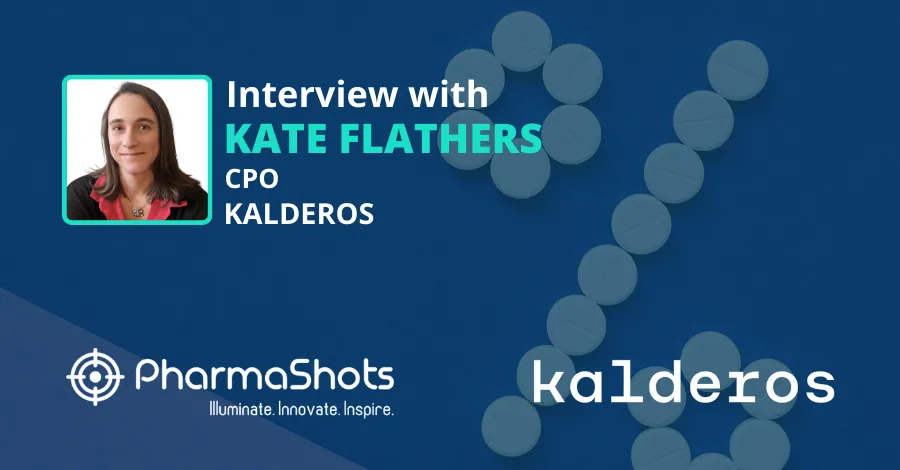
PharmaShots Interview: Dr. R. Preston Mason, Consultant at Amarin, Corp. Shares Insights from its in vitro Study Results
Shots:
- Dr. Mason spoke about the key findings from their in vitro study demonstrating EPA + statins effects in reduced lipid oxidation, which were presented at the ACC 2022
- He also spoke about the study design of the REDUCE-IT trial and its importance in the approval of its candidate in metabolic and cardiovascular diseases
- The interview summarizes the combinations of EPA & statins to reduce lipid oxidation that contributes to cardiovascular risk management
Smriti: Discuss the study design and the findings of the in vitro study of EPA + statins presented during ACC 2022
Dr. Mason: We tested the separate and combined effects of eicosapentaenoic acid (EPA), the active form of icosapent ethyl (IPE), and high-intensity statins (rosuvastatin/Crestor, atorvastatin/Lipitor) on reducing the damage (lipid oxidation) caused by free radicals in model cell membranes. We added the treatments to the samples before subjecting them to free radicals that reproduce conditions of ischemic heart disease. The results showed that EPA significantly reduced membrane oxidation in a manner that was enhanced by either rosuvastatin or atorvastatin. These findings were presented earlier this year at the annual meeting of the American College of Cardiology in Washington, D.C.
Smriti: Highlight the details of Vascepa/Vazkepa (eicosapentaenoic acid) its (MoA, RoA, Indications, and limitations)
Dr. Mason: Vascepa/Vazkepa is indicated as an adjunct to maximally tolerated statin therapy to reduce the risk of myocardial infarction, stroke, coronary revascularization, and unstable angina requiring hospitalization in adult patients with elevated triglyceride (TG) levels (≥ 150 mg/dL) and established cardiovascular (CV) disease or diabetes mellitus and two or more additional risk factors for CV disease.
In the United States, Vascepa is also indicated as an adjunct to diet to reduce TG levels in adult patients with severe (≥ 500 mg/dL) hypertriglyceridemia.
Although not fully elucidated, the mechanisms of action contributing to the reduction of CV events with Vascepa are likely multi-factorial with previous studies demonstrating it reduces thrombosis, platelet activity, inflammation, cholesterol crystallization, endothelial dysfunction, and lipid oxidation. These beneficial actions of EPA are distinct compared to other CV treatments, including omega-3 fatty acids. Additionally, clinical studies indicate that Vascepa administration leads to plaque reduction, regression, and stabilization in patients with coronary artery disease.
Smriti: Compare EPA + atorvastatin and EPA + rosuvastatin. Which combination is more potent?
Dr. Mason: EPA significantly reduced membrane lipid oxidation in a concentration-dependent fashion and in a manner that was enhanced with either atorvastatin or rosuvastatin. The combination of EPA/atorvastatin and EPA/rosuvastatin reduced lipid oxidation by 86 and 75%, respectively, in a highly reproducible fashion. The antioxidant activity of the EPA/atorvastatin was more potent than EPA/rosuvastatin by 59%. This was attributed, in part, to more potent activity for atorvastatin separately, which reduced levels of oxidation by 72% compared to rosuvastatin alone.
Smriti: Would you like to tell us about the procedure/techniques that the researchers utilized to perform this experiment?
Dr. Mason: The dose-dependent effects of EPA (5 and 10 µM) on rates of membrane lipid oxidation were measured in the laboratory by colorimetric analyses using UV/Vis spectrophotometry. EPA was tested in the absence and presence of atorvastatin and rosuvastatin (1.0 µM) and compared to control (i.e. untreated) samples. Membranes were prepared using physiologic levels of phospholipid and cholesterol. The colorimetric assay is based on the oxidation of iodide (I–) by lipid hydroperoxide (LOOH) to form triiodide (I3–), the quantity of which is directly proportional to the amount of membrane oxidation.
Smriti: What were the effects of lipid oxidation in CVD and how does the combination of EPA + statins reduce this effect?
Dr. Mason: By way of background, oxidation of lipids in vascular cell membranes and lipoproteins like LDL contributes to plaque progression and rupture in atherosclerosis. We previously demonstrated that circulating levels of oxidized lipid correlate with acute coronary syndromes and increased risk for serious CV events like myocardial infarction and stroke. As a result of its chemical structure, EPA is able to block the damage of free radicals in membranes where EPA concentrates. Certain statins, especially, atorvastatin also incorporate into membranes where they can reduce the damage caused by free radicals due to their aromatic rings and other properties that complement EPA. Thus, when EPA and atorvastatin (active metabolite) are added together to lipoproteins, there are enhanced antioxidant benefits compared to their separate actions.
The potent and dose-dependent protective effects of EPA when combined with statins may contribute to its benefits in high-risk CV patients as evidenced in clinical outcome trials.
Smriti: Give a glance at the study design of the REDUCE-IT trial and how it supports the approval of Vascepa
Dr. Mason: REDUCE-IT was a large, placebo-controlled, randomized CV outcomes study designed to assess the effect of Vascepa in patients with various CV risk factors, including elevated triglycerides between 135-499 mg/dL, and either established CV disease or diabetes mellitus and at least one other CV risk factor. The participants also had LDL levels controlled to between 41-100 mg/dL by statin therapy. The trial was conducted over seven years and followed 8,179 patients in eleven countries with the largest number of sites located within the United States. The primary results of REDUCE-IT were published in The New England Journal of Medicine in 2019. The results of this true landmark trial showed that patients randomized to Vascepa achieved a 25% relative risk reduction of major adverse CV events (MACE, 5-point composite endpoint: CV death, non-fatal heart attack, non-fatal stroke, coronary revascularization, or unstable angina). This also included relative risk reductions of heart attacks (31%), strokes (28%), and CV deaths (20%). The biomarker most strongly associated with reductions in MACE from the REDUCE-IT study was serum levels of EPA. The benefits observed with Vascepa in such high-risk subjects with elevated triglycerides on contemporary care have not been reproduced with other omega-3 fatty acid formulations.
Smriti: How has Elucida Research contributed to this study along with Amarin?
Dr. Mason: This research was conducted independently by the investigators without any funding or other support from Amarin. In addition to Dr. Mason, the co-investigators were Mr. Samuel C.R. Sherratt of Elucida Research and the University of New Hampshire as well as Drs. Deepak L Bhatt and Peter Libby of the Cardiovascular Division at Brigham and Women’s Hospital and Harvard Medical School in Boston, Massachusetts.
Smriti: Tell us more about the approval timeline and the geographic locations where Vascepa is approved.
Dr. Mason: Vascepa was launched in the United States in January 2020 as the first and only drug approved by the U.S. FDA for treatment of the studied high-risk patients with persistent CV risk after statin therapy. Vascepa was initially launched in the United States in 2013 based on the drug’s initial FDA-approved indication for use as an adjunct therapy to diet to reduce triglyceride levels in adult patients with severe (≥500 mg/dL) hypertriglyceridemia. Beyond the United States, this product is approved and sold in Canada, Germany, Lebanon, and the United Arab Emirates. In Europe, in March 2021 marketing authorization was granted to icosapent ethyl in the European Union for the reduction of risk of CV events in patients at high CV risk, under the brand name Vazkepa.
Disclosure: Dr. R. Preston Mason also serves as a faculty member of the Cardiovascular Division at Brigham and Women’s Hospital and Harvard Medical School in Boston, Massachusetts, USA, and as the President and Founder of Elucida Research Institute, US.
Source: Canva
About the Author:

Dr. R. Preston Mason serves as a consultant for industry including for Amarin, Corp. For over twenty years, Dr. R. Preston Mason has served as a faculty member of the Cardiovascular Division at Brigham and Women’s Hospital and Harvard Medical School in Boston, Massachusetts, USA. Dr. Mason is also the President and Founder of Elucida Research, a biotechnology research institute. He has received many awards for his research in cardiovascular pharmacology over the past 30 years. He has published over 600 articles and abstracts. Dr. Mason received his bachelor's degree in biology and chemistry from Gordan College, Massachusetts, US, and his Ph.D. from The University of Connecticut Health Center, US.
Tags

Senior Editor at PharmaShots. She is curious and very passionate about recent updates and developments in the life sciences industry. She covers Biopharma, MedTech, and Digital health segments along with different reports at PharmaShots.














